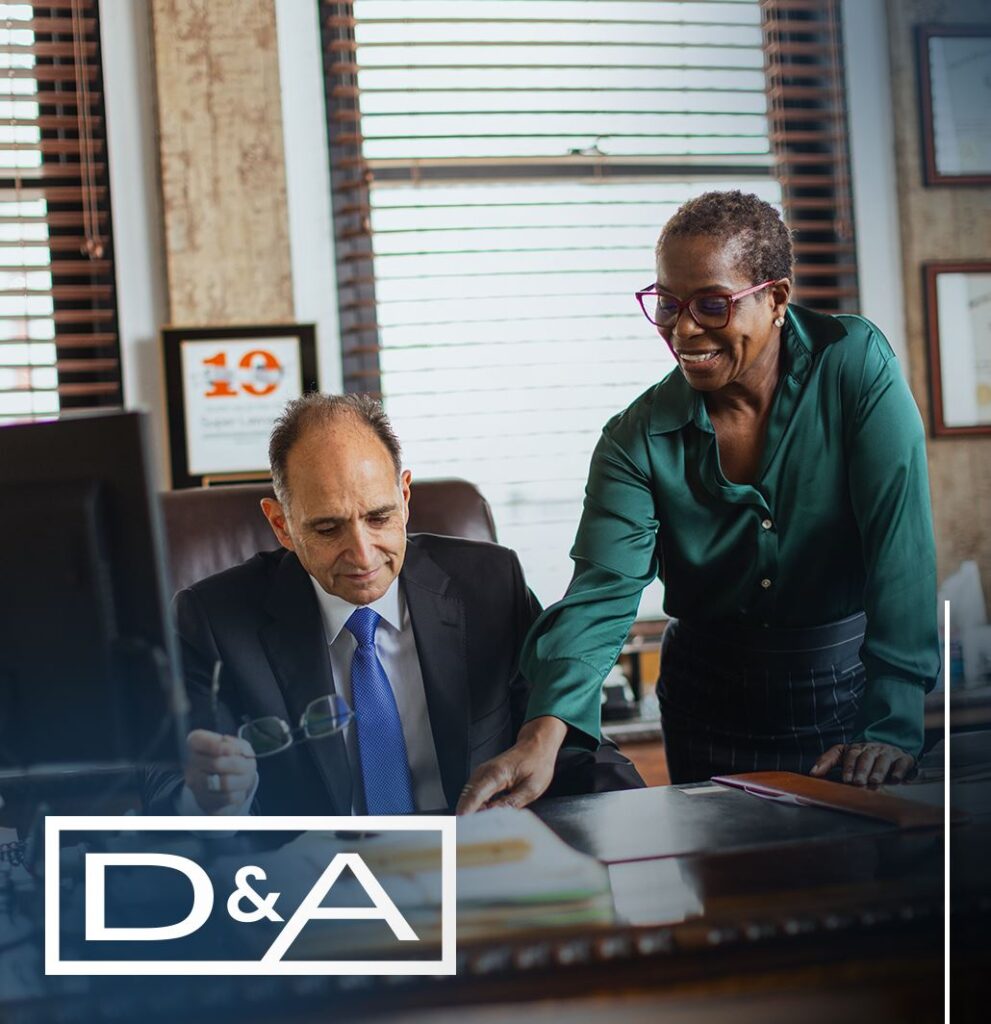Drunk Driving Accidents
See More Case Results
Top Drunk Driving Accident Lawyer in New York
Fox News reports that the average drunk driver gets behind the wheel while intoxicated 80 times before his or her first arrest. Every time an impaired driver attempts to operate a vehicle, the risk of an auto accident increases.
If you or a loved one has been injured due to a drunk driver in New York, get an experienced drunk driving accident attorney fighting for you. You can trust our drunk driving accident lawyers in New York to handle your case and recover maximum compensation for each and every type of damage you suffered and will suffer in the future.
Can You Sue Someone for Drunk Driving?
Drunk drivers can be held liable for criminal penalties as well as being sued in civil court. If you suffered serious injuries due to the negligence of a drunk driver, a DUI accident lawyer will help you use the laws of New York to recover substantial financial compensation.
Filing a civil suit against a drunk driver is a different process than a criminal lawsuit. While criminal proceedings protect the public by preventing a drunk driver from getting behind the wheel again, a civil suit seeks monetary compensation if the actions of that drunk driver caused serious injuries.
How Long After an Accident Can You Sue in New York?
In New York, victims generally have three years from the drunk driving accident to file a civil claim. There are important exceptions to this rule however that may significantly limit the time you have to file your claim. In claims against agents or employees of The City of New York or other municipality or governmental organization, for example, you are required to file a Notice of Claim as soon as 90 days from the date of your incident.
Additionally, lawsuits against The City of New York and other Public Authorities such as New York City Transit or Housing Authority must be commenced within 1 year and 90 days from the date of the accident. In order to protect your rights, it is important that you consult with an attorney as soon as possible after your accident so that you do not miss an important filing deadline. If you fail to file your claim or lawsuit by the required deadline, you could be forever prevented from recovering the benefits or compensation you deserve.
A drunk driving accident attorney in New York ensures your claim is filed quickly and accurately. Our lawyers have decades of experience holding drunk drivers accountable. If we agree to accept your case, we will begin an immediate investigation of your accident, gather and preserve evidence, file your claim before the expiration of any applicable deadlines and build your claim for maximum recovery.
For a free legal consultation with a distracted driving accident lawyer in New York, call (212) 732-2929.
How Long After an Accident Can You Sue in New York?
In New York, victims generally have three years from the drunk driving accident to file a civil claim. There are important exceptions to this rule however that may significantly limit the time you have to file your claim. In claims against agents or employees of The City of New York or other municipality or governmental organization, for example, you are required to file a Notice of Claim as soon as 90 days from the date of your incident.
Additionally, lawsuits against The City of New York and other Public Authorities such as New York City Transit or Housing Authority must be commenced within 1 year and 90 days from the date of the accident. In order to protect your rights, it is important that you consult with an attorney as soon as possible after your accident so that you do not miss an important filing deadline. If you fail to file your claim or lawsuit by the required deadline, you could be forever prevented from recovering the benefits or compensation you deserve.
A drunk driving accident attorney in New York ensures your claim is filed quickly and accurately. Our lawyers have decades of experience holding drunk drivers accountable. If we agree to accept your case, we will begin an immediate investigation of your accident, gather and preserve evidence, file your claim before the expiration of any applicable deadlines and build your claim for maximum recovery.
For a free legal consultation with a distracted driving accident lawyer in New York, call (212) 732-2929.
Proving Negligence in a Drunk Driving Accident
To establish fault in a New York drunk driving accident, your attorney must prove the other driver drove his or her vehicle in an unreasonably unsafe manner and those actions resulted in the accident. A skilled lawyer does this by creating an argument with four elements:
- Duty of care: the driver is expected to operate his or her vehicle in a reasonably safe manner
- Breach of duty: the driver failed to operate the vehicle in a reasonably safe manner
- Causation: the driver’s failure to drive with care caused an accident
- Damages: as a result of the driver’s accident, someone suffered an injury
Our drunk driving accident attorneys use these elements to demonstrate that the drunk driver was negligent in causing the accident.
Establishing Drunk Driving After an Auto Accident
If you are involved in a drunk driving crash, the moments immediately after the incident are essential in establishing a DUI case. Be sure to call the police and make a note of which person was driving. Some drunk drivers will try to switch places with sober passengers to avoid a DUI charge.
If you suspect the at-fault driver is under the influence, tell the responding officers. Your statement may lead the police to administer a field sobriety test. A lawyer will use the results of the sobriety test as evidence in your DUI claim.
Watch to see if the other driver attempts to dispose of or conceal bottles of alcohol, beer cans, or paraphernalia. If you see this, point it out to the responding officers.
Get a Free Consultation with a Drunk Driving Accident Lawyer in New York
At Dansker & Aspromonte Associates LLP, we are proud to be one of the top personal injury law firms in New York City. With over 100 years of experience, our attorneys have recovered hundreds of millions of dollars in compensation for accident victims.
Commonly Asked Questions
What steps should I take immediately after a drunk driving accident in New York?
If you’re involved in a drunk driving accident in New York, it’s crucial to call the police immediately and ensure an official report is filed. Note the driver’s behavior and any evidence of alcohol consumption. If you suspect the driver is intoxicated, inform the officers as it may prompt a field sobriety test. Document the scene with photos and gather contact information from witnesses. After addressing any urgent medical needs, consult with a drunk driving accident lawyer in New York to discuss your legal options and ensure your rights are protected.
Is there a time limit for filing a drunk driving accident lawsuit in New York?
Recover Your Life
Let Us Fight For You Free & Confidential Consultation
Unfortunately, based on your query, we are unable to assist you at this time. Our firm specializes in serious accidents and negligence cases, such as car accidents, slips and falls, construction accidents, and other accidents that require hospitalization or ongoing treatment.
How We Can Help
Do I Need a Lawyer After a Drunk Driving Accident?
Unfortunately, when a drunk driver injures or kills another person, the criminal court system will not compensate victims for their losses. In order to recover, victims need an experienced attorney fighting for their rights. In addition to the at-fault driver, there may be other responsible parties in a DUI case. For example, New York’s Dram Shop Laws allow DUI victims to recover damages from businesses responsible for selling alcohol to impaired drivers. A drunk driving accident lawyer ensures all parties accountable for your pain and suffering and other damages are held liable.
Common Types of DUI Accidents & Injuries in New York
According to the Center for Disease Control and Prevention (CDC), 12.6 million Americans drove under the influence in 2018.
Drunk drivers may be involved in a variety of accidents, including:
- Failure to properly control speed, which leads to swerving or colliding with oncoming traffic
- Rear-ending another vehicle due to poor depth perception
- Sideswiping vehicles due to an inability to follow a direct path
- Not following traffic signals or failing to yield
- Traveling on the wrong side of the road or one-way street
- Falling asleep at the wheel
In addition to colliding with other vehicles, drunk drivers can also strike stationary objects (like guardrails or trees) or a nearby pedestrian.
Our experienced personal injury lawyers have supported clients through cases involving auto accidents, construction accidents, catastrophic injuries, wrongful death, and additional claims.
Focused on Your Recovery
Call us today at (212) 732-2929 to set up your free consultation to discuss your case.
Brain Damaged Child
$50 Million
A four-year-old boy was brought to the hospital for a routine eyelid repair. To cut costs, the hospital contracted out its anesthesia services to a third-party corporation.
Wrongful Death
$21.5 Million
This accident occurred in the Bronx when our client was working on a sanitation truck. The driver lost control while making a turn. Our client was ejected and the truck ran over his leg.
Pedestrian Injury
$10.3 Million
A 22-year-old theater intern was walking across the intersection of 42nd Street and Ninth Avenue in Manhattan when she was struck by the rear door of a passing truck which had flown open because it had been improperly secured by the driver.
MVA - Police Officer
$31 Million
A 35-year-old New York City Police officer was admitted to Jacobi Hospital with head and limb injuries after a collision.
Stay in the Know
Read Our Car Accident Blog

Recover Your Life
Let Us Fight For You Free & Confidential Consultation
Unfortunately, based on your query, we are unable to assist you at this time. Our firm specializes in serious accidents and negligence cases, such as car accidents, slips and falls, construction accidents, and other accidents that require hospitalization or ongoing treatment.





